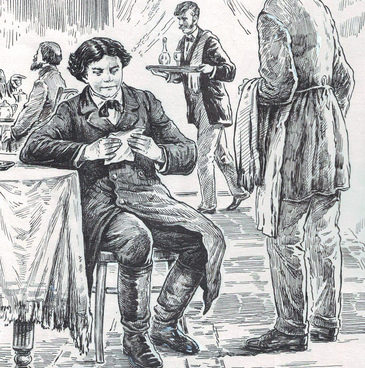The exhibition of the Penza Literature Museum features a lifetime edition of “The Dam”, a novella by the Penza writer Pyotr Ivanovich Zamoysky (1896–1958). The book used to belong to the writer himself, as evidenced by the personalized stamp on the title page.
Pyotr Zamoysky (real name Pyotr Zevalkin) was born into a poor peasant family in the Chembarsky District, Penza Governorate. When he was seven years old, the future writer enrolled at the Sobolevka Zemstvo Primary School. However, he only studied there for two years before extreme need forced him to drop out of school and return to his home village to tend cattle.
Pyotr Zamoysky developed a passion for literature at an early age. Between 1905 and 1911, he wrote many poems, fables, epigrams, renditions of famous songs, and short stories. In 1915, he moved to Moscow, where he attempted unsuccessfully to secure a position at a publishing house or become a movie actor. In the fall of the same year, Pyotr Zamoysky was left without a source of income and went back to his village. Soon, he was drafted into the army. He served on the Austrian Front and was discharged after suffering a wound in 1916. During the February Revolution of 1917, he became secretary of the Sobolevka Village Committee. After that, he worked as secretary of the Chembarsky District Government where his responsibilities included opening new schools, clubs, reading rooms, libraries, and drama clubs.
A short story by Pyotr Zamoysky was first published
in the Chembarsky District newspaper in 1921. After that, his stories began to
appear in magazines such as “Young Communist” and “Peasant Woman” and in the
newspaper “Pravda.” In 1924, his first book “Village Life” was published, which
marked the beginning of his career as a professional writer. He was a prolific
author. Between 1924 and 1930 alone, he published around 40 books. After 1924,
his works went through more than a hundred editions with a total print run of
over 4 million copies. They were translated into 25 languages spoken in the
Soviet Union and abroad. His name was widely known among readers, especially in
villages.


